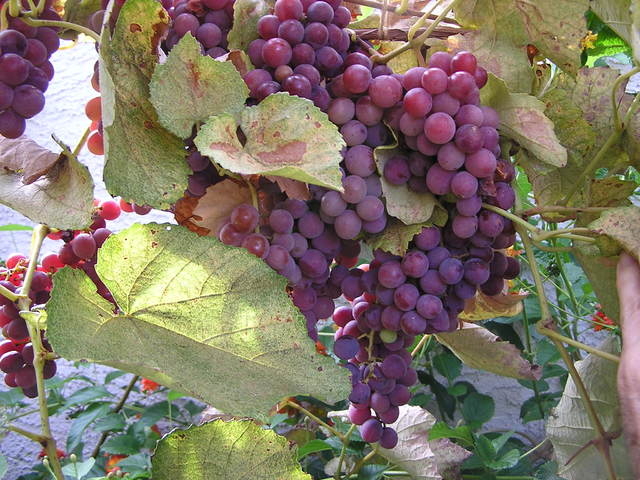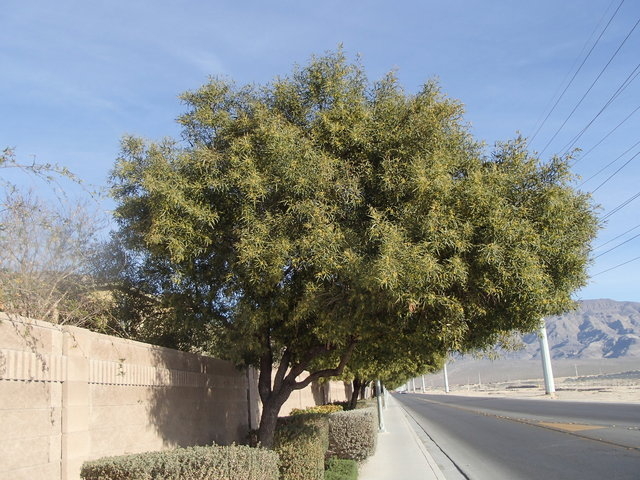Taste grapes before harvesting to determine ripeness
Q: We had a nice sized crop of Concord grapes this past summer. The grapes were still a bit small compared to what I’m used to. They are more sweet than tart but I’m not sure how long to leave them on the vine. Any thoughts?
A: Grapes no longer develop sugar once they are picked. Other examples of fruit that don’t ripen after picking are cherries and figs. Leave them on the vine as long as you can.
Some fruits such as peaches and plums continue to develop sugars and become sweeter after they have been harvested. When you pick grapes, figs and cherries, what you pick is what you get.
Grapes and berries ripen at different times. Usually a good time to harvest is when a small percentage of the berries are overripe and begin to shrivel.
Don’t harvest grapes all at once. Harvest bunches that are ripe and delay harvesting those that are not quite ready. You may harvest two to three times a week depending on how hot it is.
The hotter it is, the faster they ripen. As grapes ripen, sugar content increases about 1 percent every two to three days. The best indicator is to taste them. If they taste good, they are ready to harvest.
Next year, remove smaller bunches so that remaining bunches are spaced about 10 to 12 inches apart. Remove very small bunches entirely. Cut about one third off of the bottom of the remaining bunches. Do this when the berries are about the size of a small pea.
As long as the vines are getting plenty of water during fruit development and they’re thinned, you will get larger berries and bunches.
Q: I have two 20-year-old African sumacs in my backyard that drop nearly all their leaves every summer. Every fall they always come back. Is this normal?
A: African sumac is a messy tree. There is going to be a lot of leaf drop and the female trees will drop a lot of berries. The seeds in the berries germinate easily and you may see seedlings popping up all over the place.
Sparrows and mockingbirds love the fruit from the female tree and help to disperse new seedlings all over your neighbor’s landscapes. The male trees produce pollen that is pretty allergenic usually around February or March. These are drawbacks to African sumac.
Q: I put a green bush daisy in late this last spring. I got lots of blooms at first but then no blooms and the plant is yellowing. What’s wrong?
A: The green bush daisy or Euryops should bloom all through the summer and stay dark green if the soil has been amended at the time of planting with compost and you apply fertilizers regularly.
If you put this plant in a rock landscape with very little soil improvement or have it surrounded in rock mulch, then yellowing is quite common. It will do much better with improved soils and an organic surface mulch such as wood mulch.
For it to continue to flower through the summer, the soil should remain moist and not dry out. They will not like rock mulch at all if this is what you have.
Try adding some iron and good quality fertilizer such as Miracle Gro or Peters applied to the soil and watered about once a month. An addition of compost around the plant will help as well.
Q: I would like to plant an apricot tree with my existing pomegranate and orange. I want one with large fruit and keep the tree approximately 6 feet tall with regular pruning. Do you have any suggestions as to variety and where I can purchase one?
A: I hesitate a little bit just because I don’t know what you’re going to find in apricot trees locally this time of year. Selection of apricots is quite limited here in Las Vegas with maybe a dozen or so varieties. You might have to order online if they even have any left or wait until spring.
One of my favorite apricots that stays about 6 to 7 feet tall and requires little additional pruning when trained early in its development is Gold Kist apricot grafted on to Nemaguard rootstock. This is a normal-sized apricot tree. The fruit is excellent.
Q: We planted an African sumac tree three years ago that is showing a lot of new green leaves now. Could you please let me know how much water it needs? It was deep fertilized at the beginning of spring.
A: Are you sure you aren’t seeing flowers? These trees flower in late fall and into the winter months in the Northern Hemisphere.
You realize that trees require more water as they get older and larger. So at 3 years of age they require more water than when first planted. I would normally add another emitter at this age to give it the extra water it needs.
In another three or four years it will require more water than it requires now as it gets even larger. You would add another emitter again at this time to deliver more water. You should avoid increasing the minutes to give it more water.
With that in mind, I would estimate that after three years in the ground your tree should receive about 10 to 15 gallons each time you water if planted from a 15-gallon container. I can’t give you that estimate in minutes because I don’t know how much water the plant is getting in one of its minutes.
You should determine how much water is being delivered to the tree. I’m not sure if you’re using drip or not but many emitters state the number of gallons per hour that it is delivering or they are color-coded.
Add all these gallons together and divide by the fraction of the hour you are watering; 15 minutes you would divide by four, 30 minutes divide by two. Do not water landscape trees and shrubs daily. This time of year once a week should be adequate.
You can fertilize the tree yourself. Place some fertilizer underneath each emitter or use fertilizer stakes such as Jobes next to each emitter.
If you are watering in a basin around the tree, sprinkle fertilizer in the basin and water it in and save yourself some money. Don’t put fertilize closer than a foot from the trunk.
Q: I had two planters of petunias that stopped blooming and the leaves had lots of little holes. You told me that tobacco budworm was most likely at fault and suggested applying Dipel or Thuricide. After several applications we had lots of blooms on the petunias. At the end of this growing season should we replace all of the potting soil in the planters with new soil in the spring?
A: This insect can survive here through the winter in the soil. If these are potted plants then you can replace the soil but cultivating the soil several days before planting will help to expose them to birds.
I would watch for this problem in the future. These insects have wings in their adult form so they will fly into your flower bed from the neighbors. The two things to look for are the holes in the leaves and those little black specks which is budworm poop.
Next year in May or June start looking for that on your petunias and other susceptible flowers. I would not give up on petunias and Nicotiana just because of budworm. Put down a couple of protective sprays of Bt, Spinosad or any synthetic pyrethrin spray in April and May.
Bob Morris is a horticulture expert living in Las Vegas and professor emeritus for the University of Nevada. Visit his blog at xtremehorticulture.blogspot.com. Send questions to Extremehort@aol.com.



















